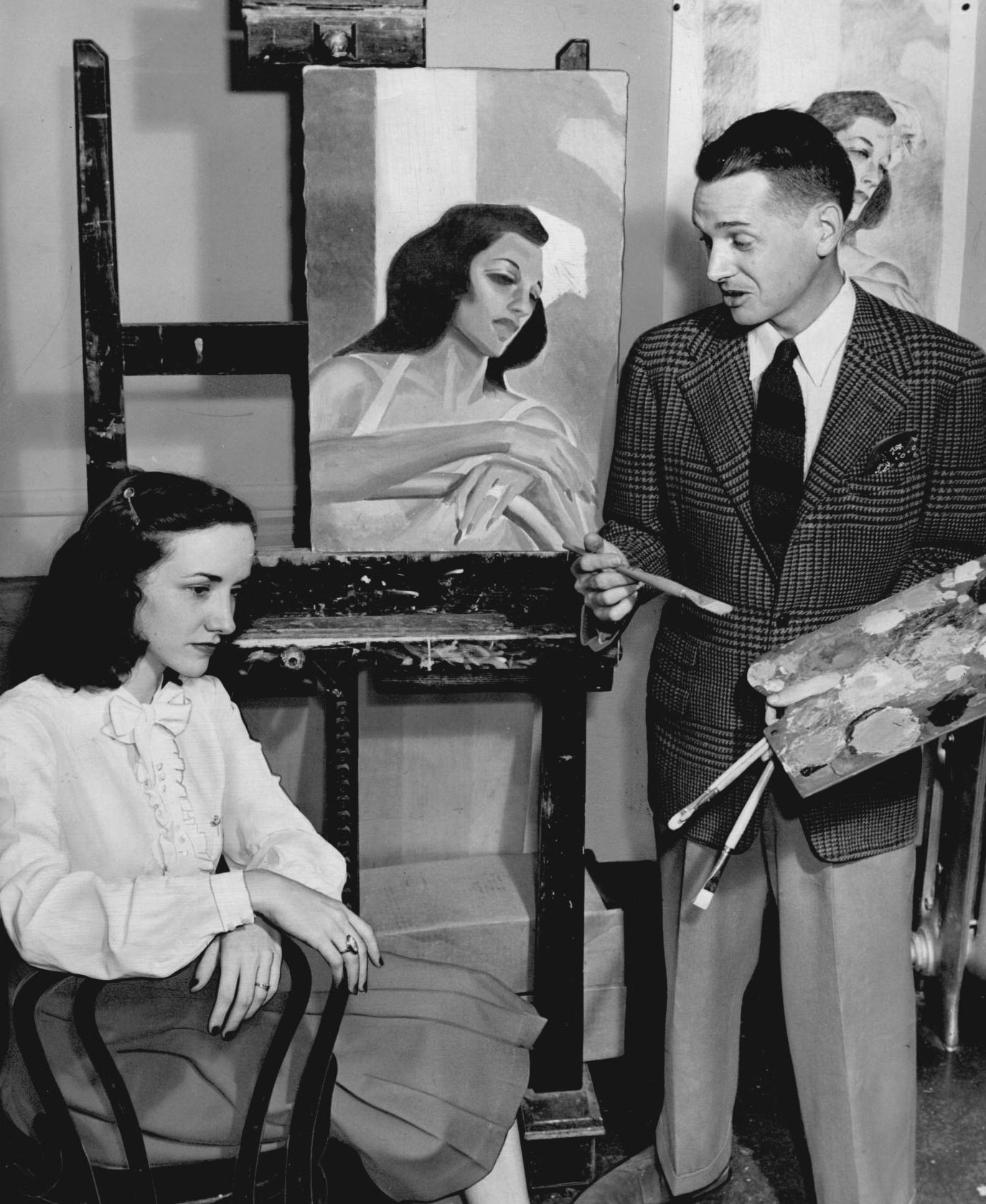The Encyclopedia of Oklahoma History and Culture
GOOD, LEONARD PHELPS (1907–2000).
Artist and art educator Leonard Phelps Good was born on June 25, 1907, in Chickasha, Oklahoma, to Bella and Jacob Calvin Good, a real estate and farm manager for the Good family’s investment properties. Leonard Good was educated in the schools of Chickasha, graduating from Chickasha High School in 1923 at age sixteen.
As a boy Good developed an interest in art, encouraged by his cousin Willie Baze Pond. A well-known local artist in the area, she taught art, and she mentored him. In 1923 he enrolled in the University of Oklahoma (OU) to pursue a career in art. His student work was prolific, and he created illustrations for OU student publications. He graduated in 1927 with a bachelor’s degree in fine arts.
Good spent his life as a working artist and art teacher. His first job, a summer teaching stint at Natchitoches Art Colony in Louisiana, led to a job in junior and senior high schools in Burkburnett, Texas. While living there, he produced paintings of oilfield scenes that stand as notable documentation of the people and their work. OU featured Good and his oilfield images in the inaugural issue of The Sooner Magazine in April 1929. In 1929–30 he taught at Taft Junior High School in Oklahoma City. In 1930 he accepted a position as instructor on the art faculty at his alma mater. He remained at OU for twenty years. One of his students in the early 1940s was the artist Richard West, later on the faculty of Bacone College. During that time Good also briefly studied photography in New York.
During World War II Good was not called into the military, but he served in other capacities. He taught art in 1941–42 in the United States Armed Forces Institute in Wisconsin. Returning to Oklahoma City, he worked as a photographer for the Oklahoma City Air Service Command, a civilian training facility at the army’s air depot (present Tinker Air Force Base). He spent one summer studying at the Art Students’ League in New York. His career at OU continued after the war, but he left in 1950.
For the next twenty-seven years Good held a succession of professorships in art at various midwestern universities. These included the University of Wisconsin in 1952, Drake University (Iowa), where he was head of the art department until 1977, and Iowa State University, where he was briefly artist-in-residence. He returned to Chickasha in 1977 and devoted the last twenty-three years of his life to painting.
Over the course of his career Good’s subjects included figures, portraits, and landscapes executed within a variety of styles and media. In the 1930s and 1940s his work often reflected American Regionalist style, which emphasized American scenes and rural and working-class people. A disciplined and dedicated man, he participated in hundreds of annual art exhibitions in the West and Midwest and had several one-artist shows in museums around the nation. He exhibited in the Metropolitan Museum of Art in New York in 1936 and in the Palais de Congres exhibition “An American Artist in Paris” in 1975.
His paintings, drawings, and photographs are held in many museums and private collections in midwestern and western states. Institutions that preserve his life’s work include the Mabee-Gerrer Museum in Shawnee, the Oklahoma City Museum of Art, the Fred Jones, Jr., Museum of Art in Norman, the Oklahoma Historical Society, the Albuquerque Museum of Art in New Mexico, and the collections of the Iowa State Arts Council and the Kansas State Federation of the Arts. In 1993 the Fred Jones, Jr., Museum held a retrospective exhibition of Good’s art.
Good married twice, first to Nancye Dooley Fenn, with whom he had a son. She died in 1969, and later he married Yoshie Tobe, who survived him when he died on February 13, 2000, in Chickasha. He is buried there in Rose Hill Cemetery with his family.
See Also
Learn More
Ray J. Davenport, Davenport’s Art Reference (Phoenix, Ariz.: LTB GordonsArt, Inc., 2005).
Leonard Good, “Oklahoma’s Art in the 1930s: A Remembrance,” The Chronicles of Oklahoma 70 (Summer 1992).
“Leonard Good,” Vertical File, Research Division, Oklahoma Historical Society, Oklahoma City.
Oscar B. Jacobsen, “Beauty in the Rough, Leonard Good Finds it in Oil Towns of Texas,” The Sooner Magazine 1 (April 1929).
Andrew L. Phelan, Uncommonly Good, Leonard Phelps Good, Educator and Artist, 1907–2000 (N.p.: Quail Creek Editions, 2009).
Citation
The following (as per The Chicago Manual of Style, 17th edition) is the preferred citation for articles:
Dianna Everett, “Good, Leonard Phelps,” The Encyclopedia of Oklahoma History and Culture, https://www.okhistory.org/publications/enc/entry?entry=GO023.
Published September 18, 2023
© Oklahoma Historical Society


